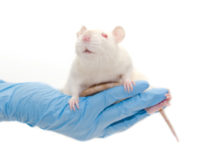Substance use disorder is recognized as a brain disease, characterized by persistent drug-seeking behavior in spite of negative consequences. A primary component of ongoing substance abuse are cravings experienced by the individual. While they play an integral role in drug addiction, cravings are not as well understood as they might be, and a recent report argues that a better understanding of cravings could lead to more effective substance abuse treatments.
Craving is one of the primary driving forces behind substance abuse and was even considered as an element of the diagnostic criteria for substance abuse in the Diagnostic and Statistical Manual of Mental Disorders (DSM-5), but a lack of consensus on the nature of craving meant it couldn’t be included. Craving is commonly understood to be a subjective state in which an individual undergoes an extraordinary urge to engage in a particular behavior, regardless of whether or not that behavior includes detrimental consequences. A recent report on craving, released in December 2016 by the journal Progress in Brain Research, explained that modern theorists have recognized this subjective state to be just one element of craving.
According to the report, craving is better understood to be a variety of phenomena. These include the memories a person has of past substance use, difficulty focusing on things other than the craving, a heightened attention to substance-related stimuli (such as the sound of two beer mugs clanking together or the sight of a hypodermic needle), and the expectancy the person has as the result of substance abuse. In addition, cravings may also be associated with the desire to mitigate the symptoms of withdrawal, which may occur upon cessation of substance use.
Unfortunately, this limited understanding of the phenomenon of craving has led to some problems in the efficacy of addiction recovery treatment, since many types of intervention target certain aspects of craving while leaving other elements intact. These untreated elements can then lead the individual back to substance abuse in order to satiate the remaining aspects of craving. A better understanding of the complex nature of craving, the report argues, will lead to… (continue reading)

















